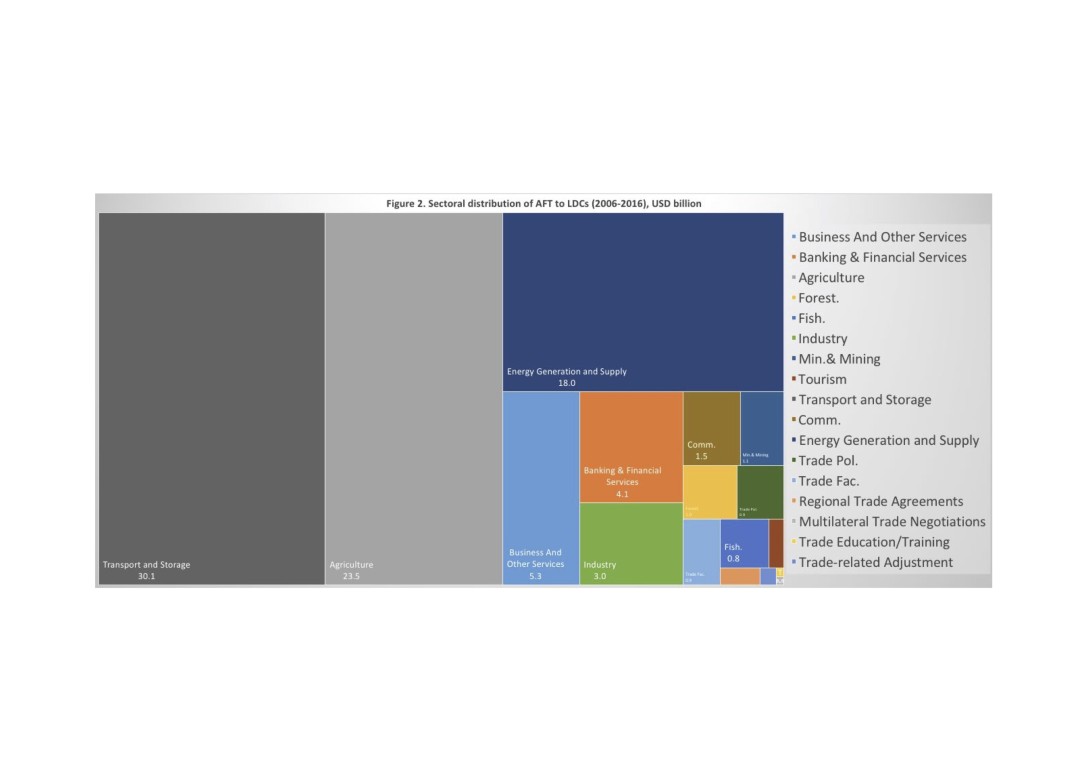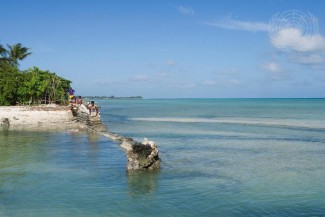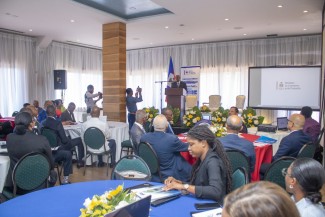Funding for aid for trade in LDCs is increasing – find out how much, from who, and where investments are going
In 2015, world leaders committed to an ambitious global agenda of action. The plan, aimed at 2030 achievements for people, planet, prosperity, peace and partnership, has the Sustainable Development Goals (SDGs) at its core. And, international trade is helping to facilitate this.
International trade is a key transmitter of goods and services, technology, knowledge and behaviour. But in order to maximize trade potential, developing countries, and particularly the least developed of them, require specific sorts of assistance to compete in international markets.
This assistance, termed aid for trade, is part of SDG 8, aimed at sustained, inclusive and sustainable economic growth, full and productive employment and decent work for all. The goal includes to “increase aid-for-trade support for developing countries, in particular least developed countries, including through the Enhanced Integrated Framework [EIF].”
Central to the WTO-led Aid for Trade Initiative, launched in 2006, is the understanding that trade should be better prioritised in the strategies of developing countries and donor agencies. A review of the Diagnostic Trade Integration Studies undertaken by the EIF suggests progress in this area, and most donor agencies report having specific aid for trade strategies and programmes in place.
The OECD has found that one extra dollar invested in aid for trade generates nearly twenty additional dollars of exports from the poorest countries. Since 2006, the share of aid for trade going to LDCs has increased to 33.3%, or an extra USD 10.3 billion.
So to summarize, investment in aid for trade brings returns, and is on the increase for LDCs.
According to Aid for Trade Task Force recommendations, prioritising trade as a tool for economic growth and poverty reduction should result in securing “additional, predictable, sustainable and effective financing for building trade capacities in developing countries.” To assess and ensure accurate accounting at the global level related to this, WTO members agreed on a set of benchmarks based on donor reporting to the OECD Creditor Reporting System (CRS).
These CRS proxies include:
- official development assistance (ODA) to help developing countries elaborate trade development strategies, negotiate trade agreements and implement their outcomes;
- building roads, ports and telecommunications networks to better connect domestic firms to international markets;
- supporting the private sector to leverage a country’s comparative advantages and diversify trade;
- helping countries pay for the costs associated with trade liberalisation; and
- supporting other trade-related needs if identified as priorities in the national development strategies of partner countries (Figure 1).

Since the Aid for Trade Initiative started, a total of USD 342.35 billion in ODA has been disbursed to finance aid for trade programmes and projects. Least Developed Countries (LDCs) received a total of USD 91 billion, or more than a quarter of total aid for trade.
In the LDCs, support for programmes aimed at reducing the infrastructure gap received USD 49.6 billion, while those targeted at building productive capacities received USD 39.3 billion. Aid for trade in its narrowest sense, meaning support for trade policy and regulation, attracted a total of US 2 billion, and US 100 million went to easing trade-related adjustment costs, which was one of the original arguments for the Aid for Trade Initiative.
To date, almost 85% of total aid for trade in the LDCs has financed projects in four sectors: transport and storage (33%), agriculture (25.9%), energy generation and supply (19.8%) and business services (5.8%). The major donors have been the World Bank with 24.7%, the United States with 17.5%, the EU with 10.2% and Japan with 8.8%.

In 2016, aid for trade commitments to the LDCs reached USD 14.8 billion; up 140% in real terms compared to the 2002-05 baseline average. At the same time, total sector allocable ODA increased by 102%. As a result, the share of aid for trade in sector-allocable aid has increased from an average of 31.4% during the baseline period to 38% in 2016.
Thus, within the expanding ODA budget, the share of aid for trade has increased even more. The 660 basis point increase, which translates to an extra USD 10.3 billion, could be considered additional aid for trade. Also and as called for in the Financing for Development Agenda, the share of (country allocable) aid for trade allocated to the LDCs has increased from 29.3% during the 2002-2005 baseline to 33.3% in 2016.
Not only did aid for trade to the LDCs increase, it has also been found to be effective at both the micro and macro level, according to a broad range of trade and development literature.
Aid for trade case stories buttress this evidence. The sheer quantity of activities described in such stories suggest that aid for trade is becoming central to development strategies and has taken root across a wide spectrum of countries and activities. Although not always easy to atribute cause and effect, the cases offer tangible evidence of how aid for trade is helping countries build the human, institutional and infrastructural capacities to turn trade opportunities into trade flows, and helping men and women make a more decent living.
The success of aid for trade in the LDCs is in no small part due to the effective support of the EIF in mainstreaming trade proirities in development strategies, and in providing a platform for leveraging additional funding. This allows the LDCs to translate their trade-related needs into funded, deliverable and succesful projects.
Although results may vary depending on the type of aid for trade, the sector at which the support is directed, income level, and location of recipient country, it is clear that the EIF is playing a pivotal role in making trade work in LDCs – and achieving the SDGs.
---------
* Both authors work for the Development Cooperation Directorate of the Organisation of Economic Cooperation and Development.
If you would like to reuse any material published here, please let us know by sending an email to EIF Communications: eifcommunications@wto.org.



